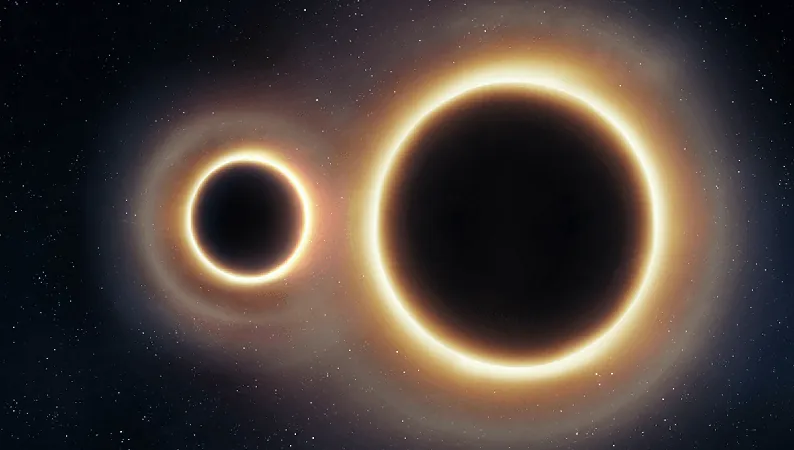
LIGO: Unlocking the Secrets of Gravitational Waves and the Possibility of Detecting Alien Spacecraft
2025-09-03
Author: Mei
Exploring the Wonders of LIGO
The Laser Interferometer Gravitational-Wave Observatory (LIGO) is a marvel of modern physics, primarily designed to detect gravitational waves—those elusive ripples in the fabric of spacetime first theorized by Albert Einstein over a century ago.
Understanding Gravitational Waves
As Barry C. Barish from Caltech explains, Einstein's general theory of relativity predicts that massive objects warp spacetime. When these objects shift, they create disturbances that travel through the universe at the speed of light. LIGO's sophisticated setup, featuring two 4-kilometer-long arms, makes it possible to sense these minute alterations.
The Mechanics Behind Detection
LIGO employs a straightforward yet intricate mechanism: two light beams are sent down pipes to mirrors placed in different directions. When gravitational waves pass through, they stretch and compress space, causing slight movements in the mirrors—movements so tiny they’re less than 1/10,000th the width of a proton.
A Surprising New Possibility: Detecting Alien Technology?
Excitingly, an international team of physicists suggests that LIGO and similar facilities could also identify signals from alien spacecraft. These ‘technosignatures’ could potentially arise from massive accelerating vessels, or RAMAcraft, producing detectable gravitational waves.
What It Would Take to Discover an Alien Craft
If an alien civilization constructed a ship the size of Jupiter and accelerated it to around 30% of light speed, LIGO could potentially detect its gravitational waves from distances ranging from 32,600 to 326,000 light-years away! Even smaller vessels the size of the Moon could be picked up from 3,260 to 32,600 light-years away.
Enhancing Detection Capabilities
Future detection technologies, including DECIGO and the Big Bang Observer, promise to expand the search capabilities exponentially. They could increase the volume for detecting such objects by a staggering factor of one million, while new techniques might aid in identifying smaller crafts or those speeding up gradually.
Conclusion: A Cautious Optimism
While the potential for discovering alien technology through LIGO is thrilling, the research team urges caution. Many unusual signals could still arise from natural phenomena. Nonetheless, it’s a fascinating prospect that this groundbreaking physics project could help answer one of humanity’s most profound questions: Are we alone in the universe?



 Brasil (PT)
Brasil (PT)
 Canada (EN)
Canada (EN)
 Chile (ES)
Chile (ES)
 Česko (CS)
Česko (CS)
 대한민국 (KO)
대한민국 (KO)
 España (ES)
España (ES)
 France (FR)
France (FR)
 Hong Kong (EN)
Hong Kong (EN)
 Italia (IT)
Italia (IT)
 日本 (JA)
日本 (JA)
 Magyarország (HU)
Magyarország (HU)
 Norge (NO)
Norge (NO)
 Polska (PL)
Polska (PL)
 Schweiz (DE)
Schweiz (DE)
 Singapore (EN)
Singapore (EN)
 Sverige (SV)
Sverige (SV)
 Suomi (FI)
Suomi (FI)
 Türkiye (TR)
Türkiye (TR)
 الإمارات العربية المتحدة (AR)
الإمارات العربية المتحدة (AR)